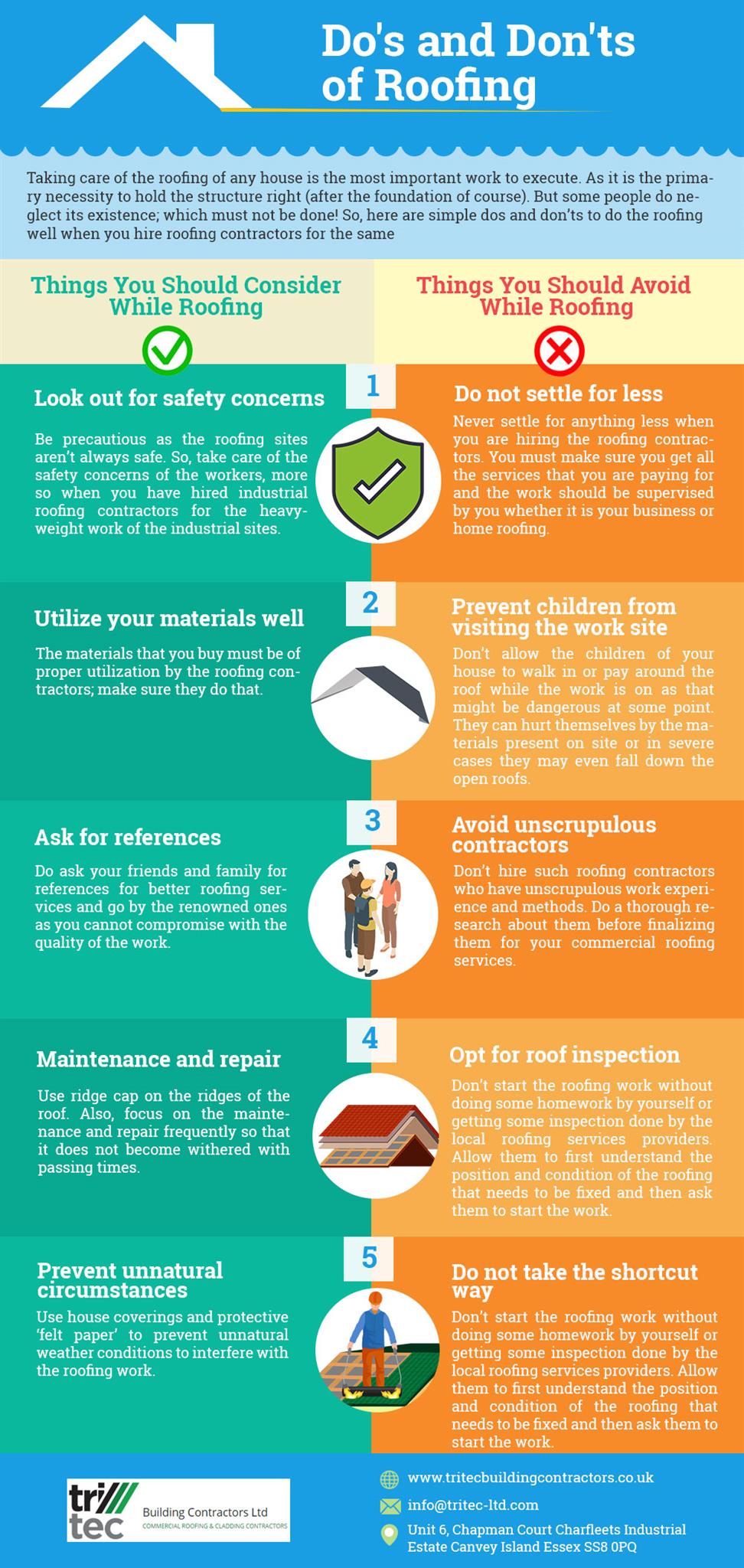Usual Risks In Roofing Installment And Ways To Sidestep Them
Usual Risks In Roofing Installment And Ways To Sidestep Them
Blog Article
Produced By- go here
When you're intending a roof installment, it's very easy to neglect important information that can cause substantial troubles down the line. You may be attracted to cut edges on product option or skip proper blinking installation, however these typical mistakes can result in costly repair work later on. Recognizing the value of ventilation and adhering to local building ordinance is necessary for an effective project. So, what are the essential steps you should take to ensure your roofing stands the test of time? Allow's check out some efficient methods to avoid these challenges.
Poor Material Choice
When it pertains to roof covering installation, choosing the incorrect products can bring about pricey issues down the line. You could believe that any kind of roof covering material will do, but that's a typical false impression. It's crucial to pick materials that match your neighborhood environment and the particular requirements of your home.
As an example, if you stay in a location with heavy rain or snow, going with asphalt roof shingles may not be the best option. Rather, take into consideration more sturdy choices like steel or slate.
In addition, focus on the top quality of the products you're thinking about. Economical products may save you cash upfront, but they frequently lack durability and can cause constant repairs or replacements.
You need to additionally consider the style of your home and make certain the materials you select will preserve its visual allure.
Finally, do not fail to remember to consult with professionals. They can offer valuable understandings and advise materials that abide by regional building regulations.
Spending time in correct material option now can assist you stay clear of frustrations and costs in the future, making your roofing task a success.
Inadequate Flashing Installation
Selecting the appropriate products isn't the only element that can bring about roof issues; insufficient blinking installment can also produce significant concerns. Flashing is crucial for directing water away from at risk locations, such as chimneys, skylights, and roof valleys. If https://www.inquirer.com/business/delaware-valley-consumer-roofers-pennsylvania-new-jersey-20190713.html 's not mounted appropriately, you run the risk of water breach, which can lead to mold and mildew growth and architectural damage.
When you mount flashing, ensure it's the appropriate type for your roof covering's design and the regional environment. For instance, metal flashing is usually a lot more long lasting than plastic in areas with heavy rain or snow. Make sure the flashing overlaps suitably and is safeguarded tightly to avoid gaps where water can seep through.
You need to also pay attention to the setup angle. Flashing ought to be positioned to route water far from your home, not towards it.
If you're unclear about the installment procedure or the materials required, seek advice from a professional. They can help determine the best flashing choices and make sure whatever is mounted appropriately, guarding your home from possible water damages.
Taking these steps can save you time, cash, and headaches later on.
Neglecting Air Flow Requirements
While lots of property owners concentrate on the visual and structural facets of roofing system setup, disregarding ventilation demands can lead to serious long-term repercussions. Proper ventilation is necessary for regulating temperature level and moisture levels in your attic, protecting against concerns like mold and mildew development, wood rot, and ice dams. If you do not mount adequate air flow, you're setting your roof up for failing.
To prevent this blunder, first, evaluate your home's specific air flow demands. A well balanced system generally includes both consumption and exhaust vents to promote airflow. Guarantee you've installed soffit vents along the eaves and ridge vents at the height of your roofing system. This mix permits hot air to escape while cooler air enters, maintaining your attic room space comfortable.
Also, take into consideration the type of roofing material you've picked. Some products may call for added ventilation methods. Confirm your local building codes for air flow standards, as they can vary dramatically.
Lastly, don't neglect to examine your ventilation system routinely. Obstructions from particles or insulation can restrain airflow, so keep those vents clear.
Conclusion
Finally, preventing typical roofing installment mistakes is key to ensuring your roofing's long life and efficiency. By selecting the right materials for your environment, installing blinking effectively, and addressing ventilation needs, you can stop pricey issues down the road. Do not fail to remember to acquaint yourself with neighborhood building regulations and timetable regular evaluations. With these steps, you'll delight in a safe, resilient roof covering that shields your home for many years to come. Happy roofing!
